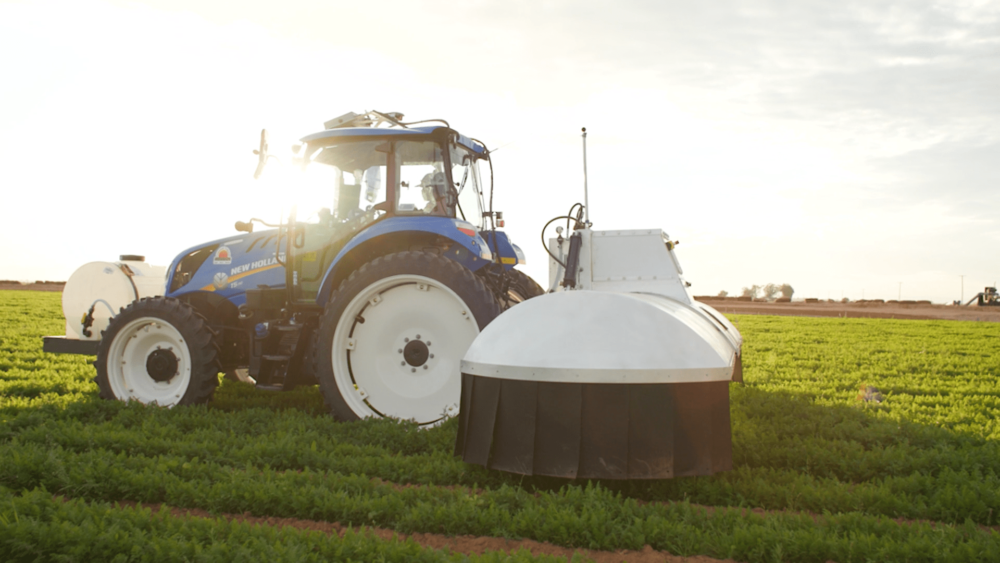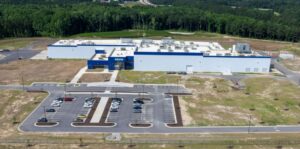Disclosure: AFN’s parent company, AgFunder, is an investor in Verdant Robotics.
Verdant Robotics has officially launched its platform that combines data analytics and crop applications such as spraying and weeding into a single farming implement for specialty crop farmers. The company says its tool delivers better outcomes for those farmers, from bigger yields and cost savings to a better view overall of what’s happening on the farm.
Hayward, California-based Verdant was founded in 2018 and, over the last 18 months, has stealthily rolled out its product to farms of various sizes across the US.
It is contracted to service roughly 40% of the US carrot market exclusively for the next five years, according to co-founder and CEO Gabe Sibley.
He also names plums, cherries, apples, onions, garlic, and peaches as just a few other crops the Verdant system works with. “After a big search we found specialty crops with fixed infrastructure were a very good fit,” he tells AFN. “We’ve really in the last year scaled into thousands of hours operating every day, all day.”
To date, Verdant has raised $21.5 million from AgFunder, Autotech Ventures, Cavallo Ventures, DCVC Bio, and Future Ventures, among others. Building on its rollout across several US farms, the company plans to partner with more growers in the immediate future while also commercializing a version of its system for orchard crops in 2023.
‘Multi-action’ technology
Verdant’s “robotics-as-a-service” model, as the company calls it, combines computer vision, GPS navigation, artificial intelligence, and soil and plant sciences. It claims that its major differentiator is its ability to execute multiple tasks from the same machine – what the company calls “multi-action” technology. Right now that includes high-speed weed removal and chemical application.
This is fairly unique amongst today’s pick of farm robotics offerings, Sibley claims, since most only perform a single task. Of notable farm robotics deals last year, one was for a rock-picking machine, one for a harvesting bot, and one for a weeding system. In theory, at least, this could give Verdant a competitive edge in the ag robotics market, which is still in its early days in terms of adoption.
Verdant’s hardware is available as a six-row or 12-row implement that attaches to the back of any tractor and can cover up to 4.2 acres per hour for laser weeding and spraying. A lighting and camera system inside the machine identifies and indexes plants in realtime and provides updates to the farmer via an in-cab interface.
Simultaneously, the system uses its sensors and cameras to build a digital twin of the field so that farmers can keep track with millimeter accuracy.
It’s the kind of precision and data that’s only possible through computation, Sibley suggests.
“Computers are capable of things people aren’t. They can count millions of things per acre,” he says.
“Google can index the web. What we do is index physical space.”
Indexing the farm
Sibley and his team, which includes chief operating officer Curtis Garner and chief technology officer Lawrence Ibarria, share a collective history that includes self-driving cars, Mars rovers, simulators, and hands-on farming experience. He says the team spent six months talking to farmers and trying to understand their most pressing problems before building their solution.
“Farmers told us not to give them more data, but to figure out what to do with the data they already have – or better yet just go do it,” Sibley says.
He stresses that farmers will continue to play a crucial role in the startup’s strategizing when it comes to expanding Verdant’s system to other on-farm tasks. Verdant’s current capabilities are “just the tip of the iceberg” of what’s possible with farm robotics, he says.
“As the technology is rapidly developing we believe it is super important to work tightly with farmers, operating a service. If you’re not out in the field getting your boots dirty, you’re not going to find the value.”




